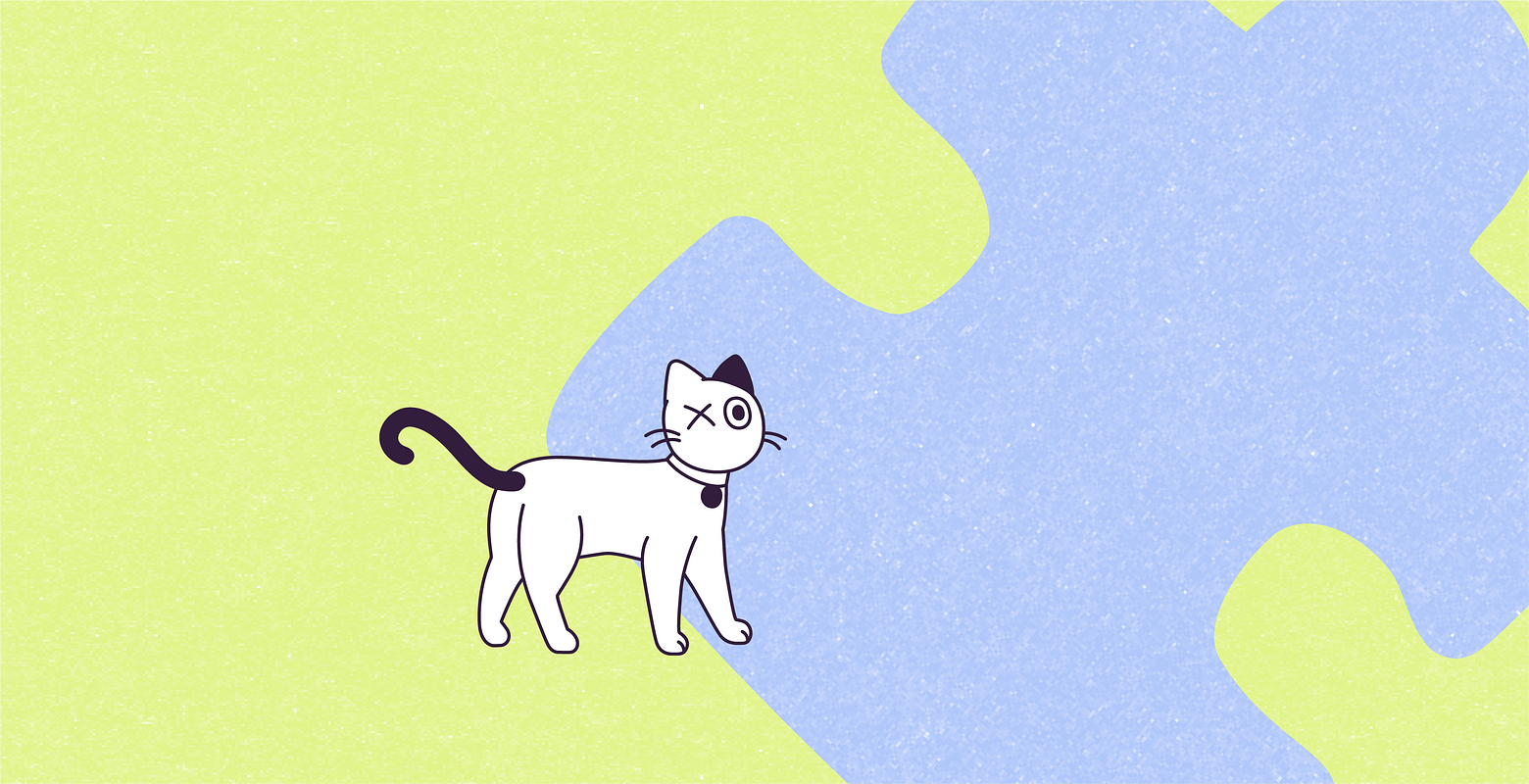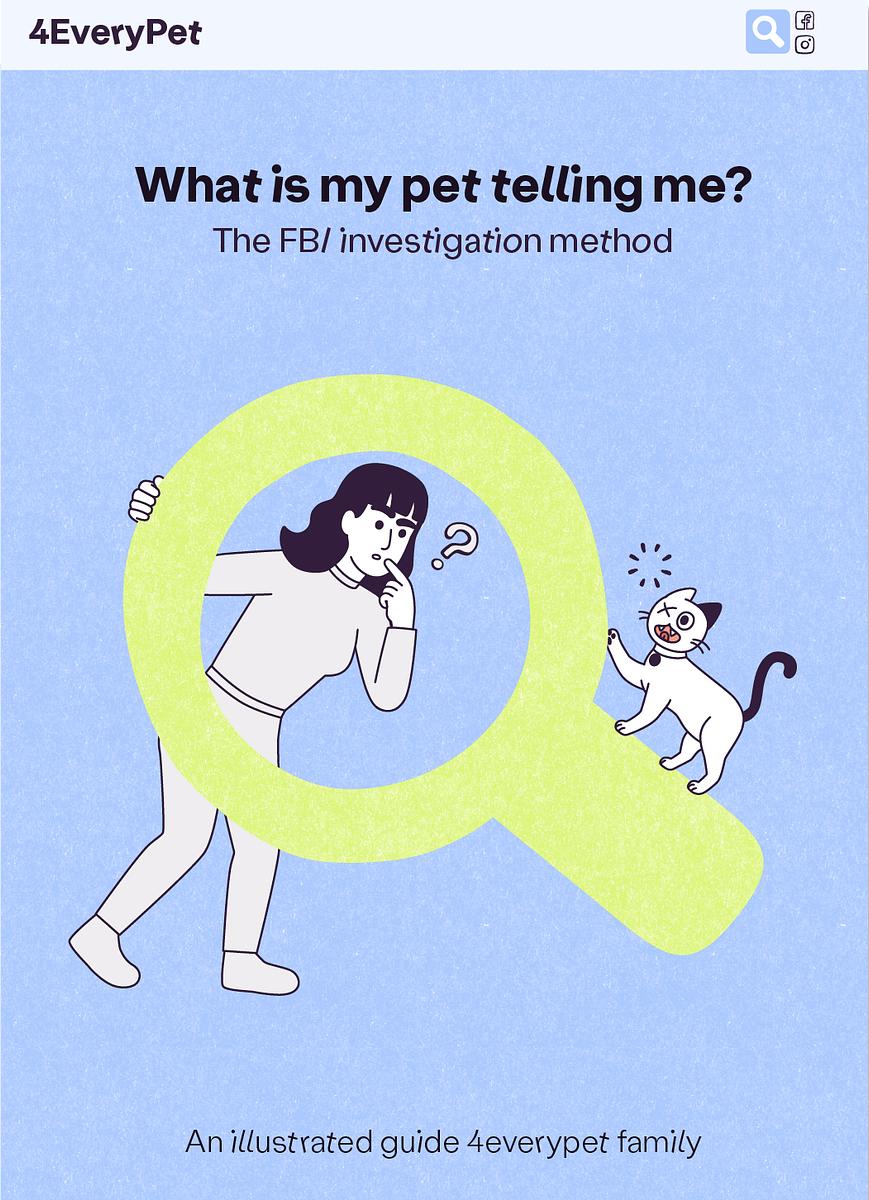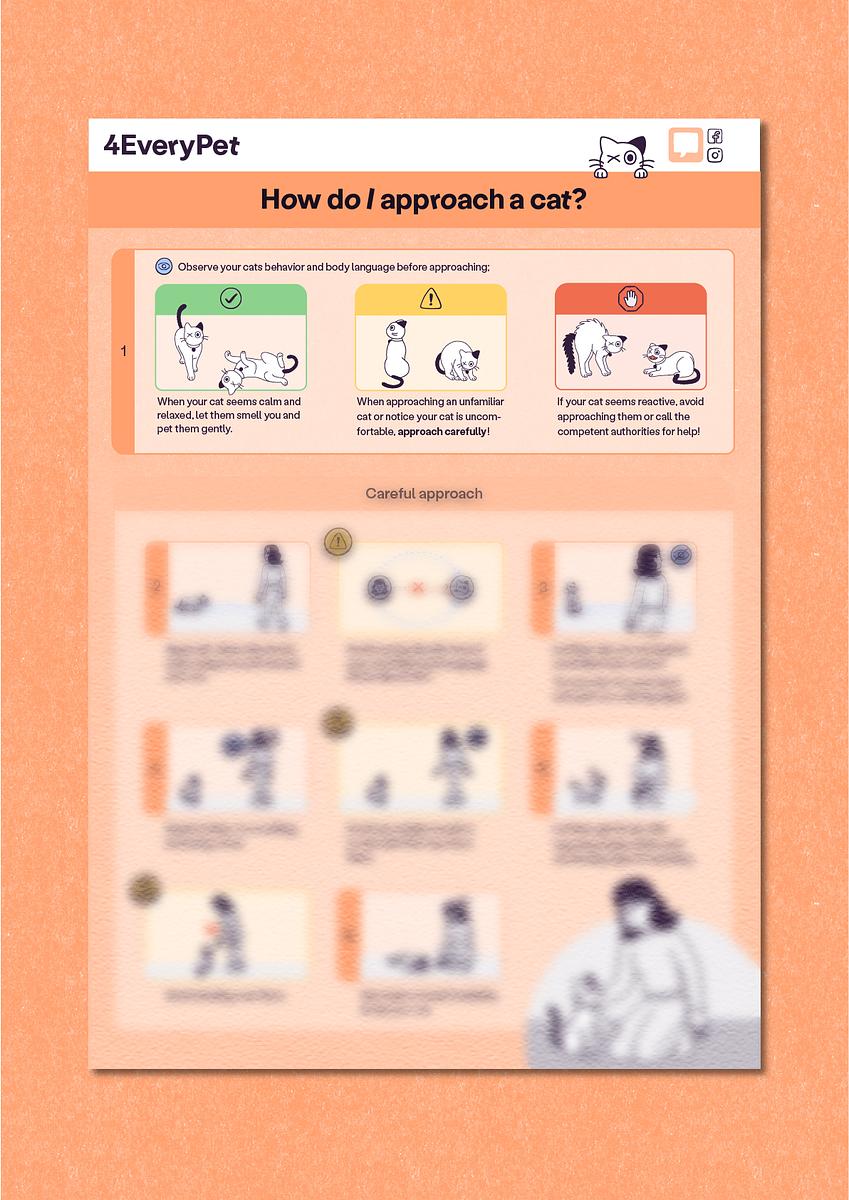Pets are part of our families, but we speak different languages. To help you, we created a pet language investigation method for you to understand your pet better.
After gathering your cat's clues, you are ready to put the pieces together in your investigation. How do you think your cat is feeling?
To dig deeper into the complete process of this investigation, check out our previous blog post on how to investigate pet body language.
Let's begin!
Put the pieces together
Every piece of the puzzle gives precious information, but it’s essential to understand how they work together to understand the whole message.
Cat mood dictionary
Learning about cat postures and movements
Understanding your pet's posture is crucial, as misinterpretation can lead to stressful situations. Look for subtle movements and changes in your pet's body posture, such as a slight change in the position of their ears, a shift in their weight, or the tension in their muscles. These can be the key to understanding your pet's mood. Pets respond quickly to their surroundings, so it is important to pay close attention to their behavior.
Relaxed cat
Your cat feels safe and happy. They are relaxed or playful. You may observe the following:
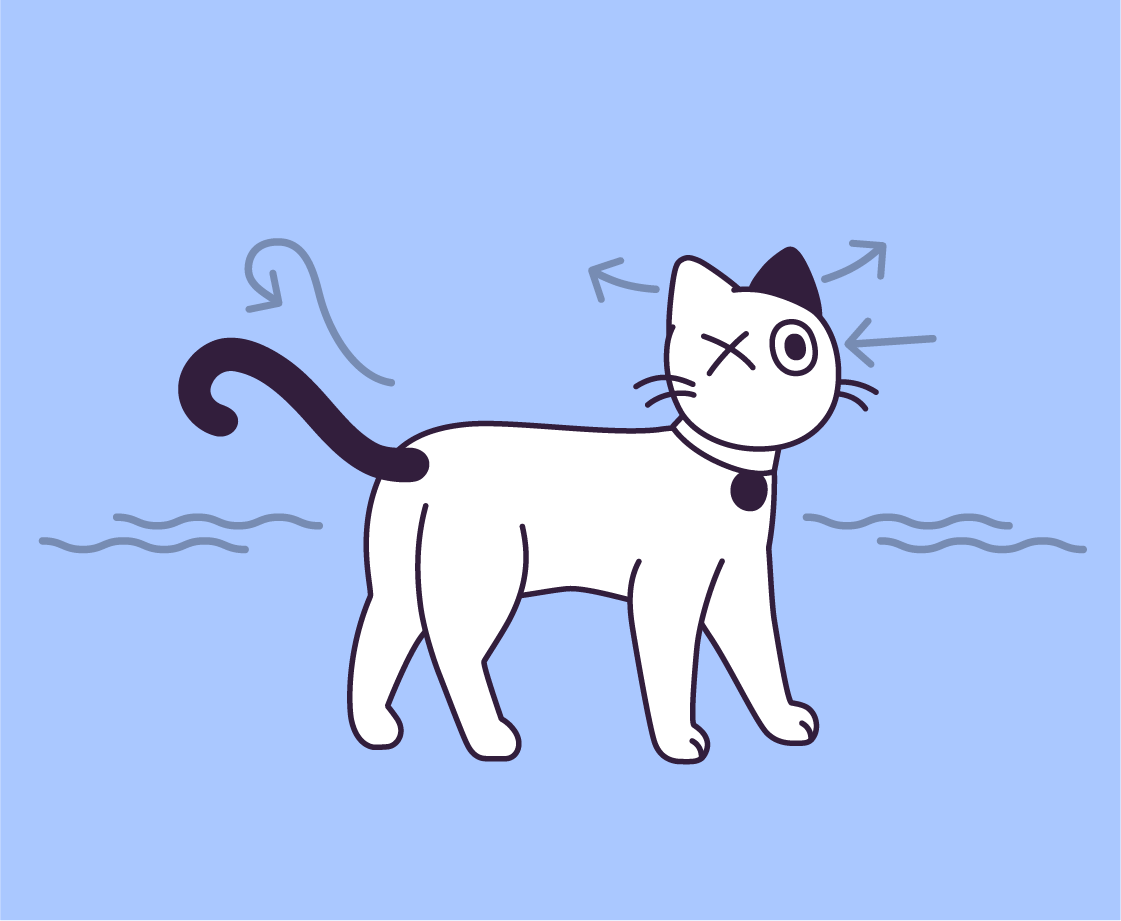
1. Ears upright and slightly rotated to the side;
2. Pupils contracted;
3. Tail up with a curve at the tip;
4. Body at a neutral position;
5. Meow, purr, trill, chirp or chirrup, or chatter.
Don't miss out on the opportunity to check our previous blog posts to find the clues:
Cat body posture dictionary
Cat Vocalizations Dictionary
That’s it! Practice investigating your pet's language every now and then. After a while, most steps will become natural to you!
Stay tuned for our next blog post. We'll explore how all the clues come together when your pet is curious.
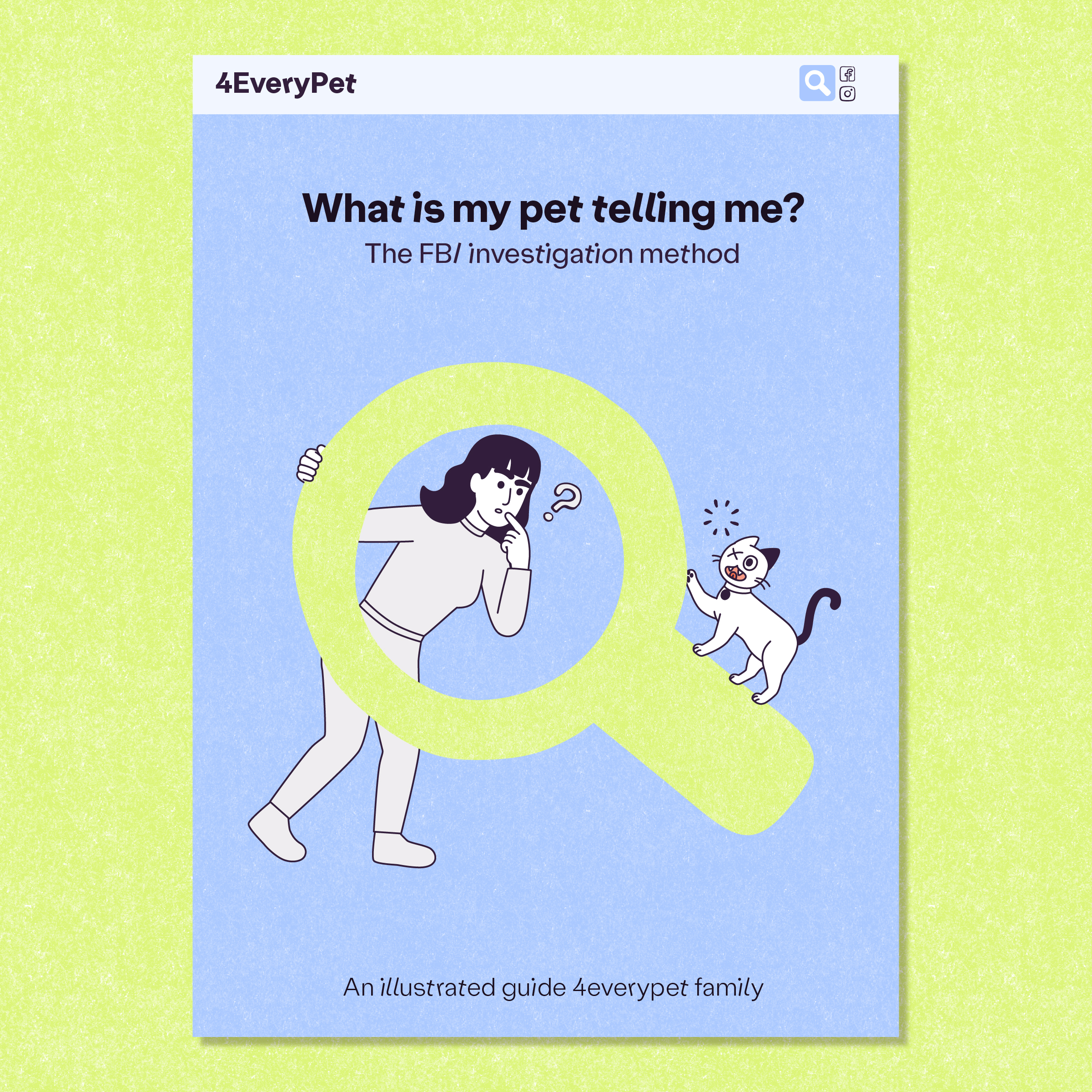
Can't wait to explore the FBI Investigation Method?
You can now access the complete Method in the ebook. Start investigating today!
Thank you for reading!
4EveryPet can only exist thanks to your support. Please share this blog post or buy us a Ko-fi to help keep our content available 4everyone!
